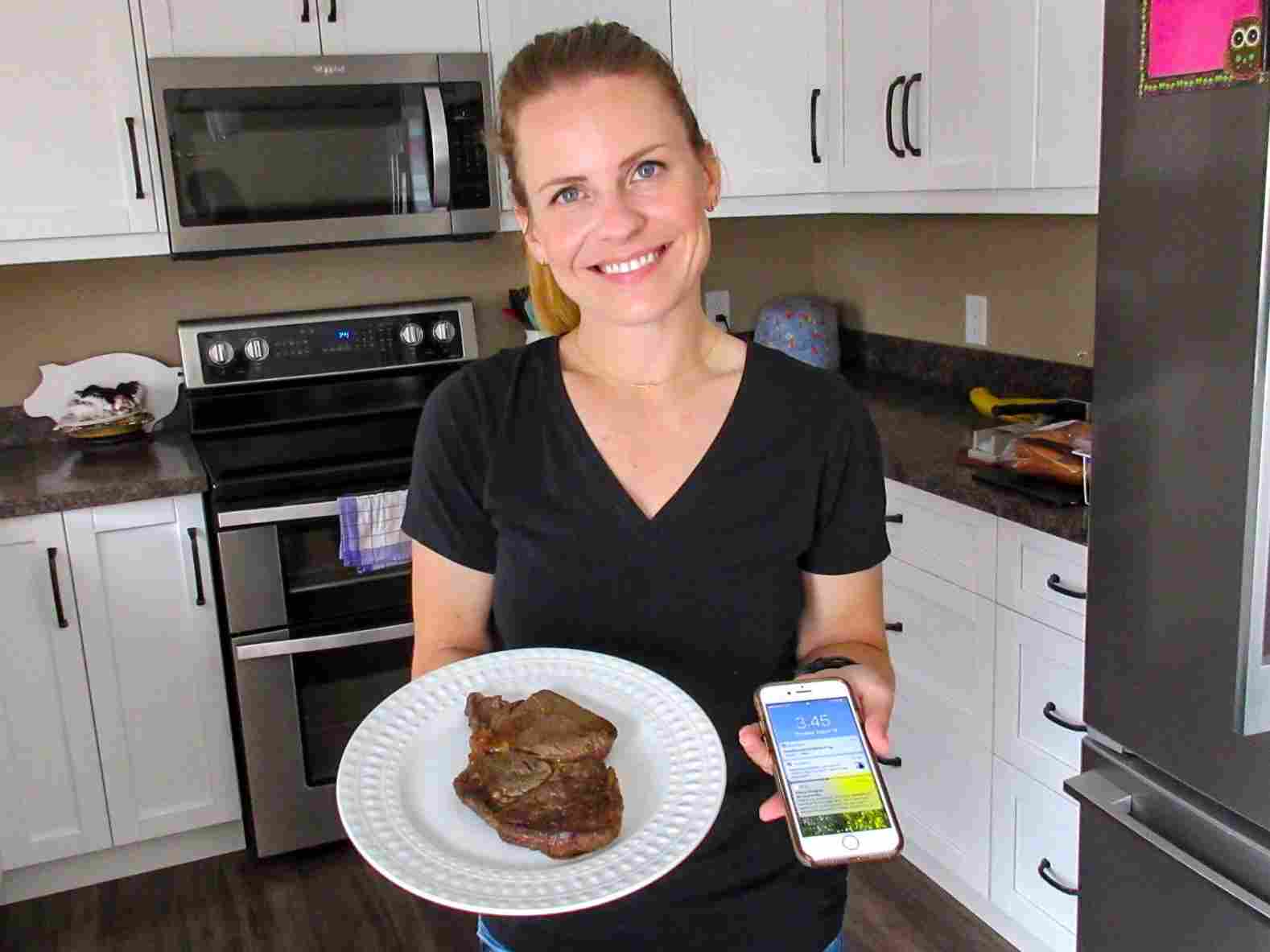Last week I wrote a blog about climate change, using two burgers to show how agriculture is part of the solution. A lot of the comments I had back were concerns it takes too much water and land to raise a cow and therefore, we should eat less beef.
Let’s talk about that ?
For comparison purposes, I have a rib-eye steak from my local butcher shop and my Iphone (sorry Samsung). Why the cell phone? According to Pew Research Center (1), half of the world’s population has a cell phone. Both of these require water to produce, and while half of the world’s population has a cell phone, beef is the one necessary for survival.
In the United States, beef requires 441* gallons of water to produce one pound of boneless beef, which sounds like a lot of water (2).
It can be considered large as a standalone number or compared to the water needed to grow and produce some other foods like a loaf of bread (150 gal/lb), which my farm helps produce, chicken (400 gal/lb), watermelon (100 gal/lb), and rice (35 gal/lb) (3).
This is what headlines focus on to create fear and doubt in certain food. But did you know it takes more water to drive around in a car and use a cell phone than it does to raise beef?
Those headlines don’t state it takes a whopping 39,090 gallons of water to produce a small car (3) and 3190 gallons to produce a cell phone (4).
All food uses water – it’s about efficiency
We need protein as part of a healthy diet, whether that comes from beef, poultry, fish, beans, nuts, lentils, or dairy products. It takes water and land to raise and grow all our food, whether it’s proteins or veggies, to have products in our homes and as part of our everyday lives.
But if we’re talking water use for things in our everyday life, why are we pointing fingers at cows and agriculture so much?
Drought has hit our farm the last couple of years and we understand the impact when there is a shortage of water. Water and land are two of the most precious resources we have in agriculture and around the world. There’s a really great story when it comes to agriculture’s water and land use that is missing from the headlines.
In comparison to 5 billion of us with cell phones, there are 996 million head of cattle in the world in 2018, which has shrunk since 2014 (5).
While our outputs have grown, we are producing more meat and milk today using fewer animals, less land and less water, because we’ve made commitments to improve our efficiency. Clean water is an active goal among farmers and ranchers.
In the US, dairy cow numbers fell from 12 million in 1970 to 9.4 million in 2018 (6,7), yet milk production per cow doubled in that time (from 9,751 to 22,941 pounds per year) (6,8).
Producing a gallon of milk uses 90% less land and 65% less water with a 63% smaller carbon footprint than in 1944 due to improvements made by farmers in cow comfort, health, nutrition, and breeding (9).
Using the land to grow food v parking lots
Now for land. Two thirds of agricultural land in the world is considered marginal and cannot grow a crop well but can be used to grow cows (10).
The only thing that can grow on pastureland is grass, native plants and…grazing livestock. Getting rid of livestock would not make use of the 70% of all agricultural land.
Why do we blame cows for taking up so much land that can’t be used for much of anything else, but in the US, it’s reported that 12,000 square miles are dedicated to just parking lots, roughly the size of Vermont and Connecticut combined (11)?
Look beyond the headlines, see the whole story
This post isn’t to sway you into eating more or less meat, but to show that there are two sides to every story. The examples above are only a few ways farmers and ranchers are working to be more environmentally friendly and efficient. Whether we grow crops or raise livestock, we care about our natural resources.
We know we have more work to do, but we have been working hard at being more efficient, changing, adapting, and being part of the solution.
There is always more to the story than the click-bait headlines. When you read or hear that livestock uses too much water, know that there are farmers and ranchers behind the scenes doing their best to save the planet too.
Sources:
1: https://www.pewresearch.org/…/smartphone-ownership-is-grow…/
2: http://www.meatmythcrushers.com/…/myth-it-takes-2400-gallon…
3: https://www3.epa.gov/safewater/kids/water_trivia_facts.html
4: https://www.sjwater.com/…/water-blog…/water-water-everywhere
5: https://www.statista.com/…/global-cattle-population-since-…/
6: https://www.ers.usda.gov/…/publi…/45868/17034_err47b_1_.pdf…
7: https://www.milkbusiness.com/…/licensed-dairy-farm-numbers-…
8: https://www.dairyherd.com/…/2017-annual-milk-production-14-…
9: https://www.agupdate.com/…/article_8198ad76-0ada-5147-96ec-…
10: https://peakhuman.libsyn.com/part-41-dr-frank-mitloehner-di…
11: https://www.nytimes.com/…/taking-parking-lots-seriously-as-…
*You may have seen larger numbers often cited from other sources because they rely on averaged global data. There are other nations use more water than in the United States to raise livestock.

